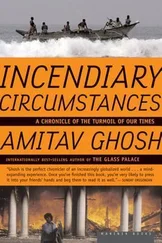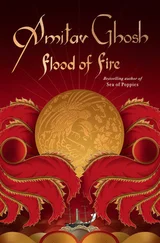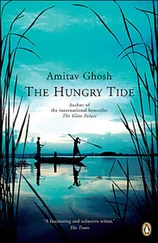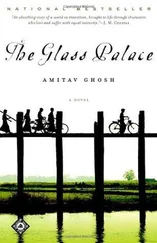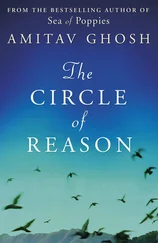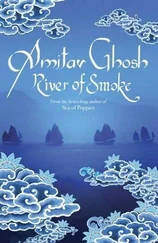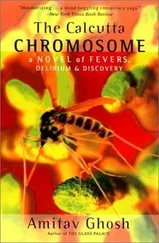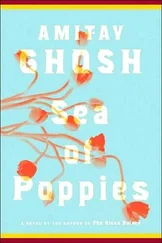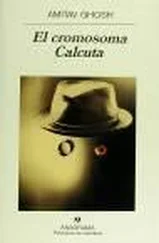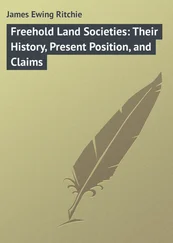9 It is this language:Tu  u is spoken by 47 per cent of the population of South Kanara District — the area that was once known as Tu
u is spoken by 47 per cent of the population of South Kanara District — the area that was once known as Tu  anâ
anâ  ( Karnataka State Gazetteer [South Kanara District] , p. 94, Govt. of Karnataka, Bangalore, 1973).
( Karnataka State Gazetteer [South Kanara District] , p. 94, Govt. of Karnataka, Bangalore, 1973).
10 Writing in Alexandria … Ptolemy:The name of this dynasty is also spelt, in various inscriptions, as A  va, A
va, A  uka, A
uka, A  upa and A
upa and A  apa (Cf. K. V. Ramesh, A History of South Kanara , p. 30; and P. Gururaja Bhatt, Studies , p. 18).
apa (Cf. K. V. Ramesh, A History of South Kanara , p. 30; and P. Gururaja Bhatt, Studies , p. 18).
11 For several hundreds of years:For detailed accounts of the history of the A  upas see K. V. Ramesh’s History of South Kanara; P. Gururaja Bhatt’s Studies , pp. 18–41; and B. A. Saletore’s Ancient Karnataka, (History of Tuluva , Vol. I, Oriental Book Agency, Poona, 1936).
upas see K. V. Ramesh’s History of South Kanara; P. Gururaja Bhatt’s Studies , pp. 18–41; and B. A. Saletore’s Ancient Karnataka, (History of Tuluva , Vol. I, Oriental Book Agency, Poona, 1936).
12 it was in the reign of…:Cf. K. V. Ramesh, History of South Kanara , p. 115. P.Gururaja Bhatt dates Kavi A  upendra’s reign from 1115 to 1155 ( Studies p . 23).
upendra’s reign from 1115 to 1155 ( Studies p . 23).
13 I had been told:I am indebted to a great many people for offering help, advice and criticism while I was working in Karnataka. I would particularly like to thank Dr C. Veeranna, Dr G. S. Sivarudrappa, Dr M. N. Srinivas, Sm. Tara N. Chandravarkar and Dr Vivek Dhareshwar of Bangalore; Dr Vijaya Dabbe of Mysore; and Dr K. S. Haridas Bhatt, Shri S. A. Krishnaiah, Dr Alphonsus D’Souza and Sm. L. Lobo-Prabhu of Mangalore. The late Shri K. S. Niranjana and Sm. Anupama Nivanjana were also very generous with their time and advice while I was in Bangalore; I would like to record my gratitude to them here.
14 In the translated version of the letter:S. D. Goitein, Letters , p. 191.
15 Indeed … an accepted way of spelling the word:The tenth-century Arab traveller and geographer Masûdî, for example, uses the word brâhma and various cognates frequently in his encyclopaedic compendium, Murûj al-Dhahab (Les Prairies dor) , Vol. I, pp. 149, 154, & 157–8 (Arabic text and French Translation, C. Barbier de Meynard & Pavet de Courteille, Société Asiatique, Paris, 1861). The geographer Al-Idrisi, who happened to be a contemporary of Ben Yiju’s, was perfectly familiar with the word although he never went anywhere near the Indian Ocean. Al-Idrisi uses the word frequently but he sometimes uses it to mean Brahmin (as indeed does Mas’udi often).
16 The slave-trade in Ben Yiju’s time:A Persian chronicler of the ninth century describes travelling merchants who took ‘eunuchs, female slaves (and) boys’ from ‘the country of the Franks’, in Europe, and traded them, in India and China, for ‘musk, aloes, camphor and cinnamon’, (Ibn Khurdâdhbih, quoted in Reinaud’s introduction to Abû al-Fidâ’s Kitâb taqwîm al-buldân (Géographie d’Aboulfélda), p. 58, Arabic text, ed. M. Reinaud & Baron MacGuckin de Slane, Paris, 1860). A century later, a geographer, Ibn  auqâl, noted that Byzantine, Slavonic and Berber slaves were regularly traded in the cities of the east. (Cf. H. Z. Hirschberg, Jews in North Africa , p. 252). Edward H. Schafer deals briefly with the import of foreign slaves into China in The Golden Peaches of Samarkand , pp. 43–7 (University of California Press, Berkeley, 1963).
auqâl, noted that Byzantine, Slavonic and Berber slaves were regularly traded in the cities of the east. (Cf. H. Z. Hirschberg, Jews in North Africa , p. 252). Edward H. Schafer deals briefly with the import of foreign slaves into China in The Golden Peaches of Samarkand , pp. 43–7 (University of California Press, Berkeley, 1963).
17 Indeed, an obscure reference:In one of his letters, Madmun, writing to Ben Yiju, remarks: ‘This year the “traders” (jallâb) have not come here yet from Zabîd’ (T — S 20.130, recto, lines 45–46). The word jallâb has the connotation of ‘slave-traders’. The implication of the passage is that Ben Yiju had been expecting the arrival of a party of slave-traders in Mangalore. Al-Idrisi observes that Zabid was a major destination for Abyssinian slave-traders ( Kitâb , Vol. I, p. 49).
18 The slaves … traded in … Egypt:See S. D. Goitein, ‘Slaves and Slavegirls in the Cairo Geniza Records’, ( Arabica , Vol.9, 1–20, 1962); and A Mediterranean Society , Vol. I, pp. 130–147.
19 But the slave’s name:Dr Geoffrey Khan has found the name Bâmah in a third-century AH Arabic papyrus, and he interprets it as a rendering of the Coptic name Pamei/Pame (personal communication). It is extremely unlikely however that the B-M-H of MS H.6 is intended to represent the same name, since it is spelt differently, not just once, but consistently through the whole range of Ben Yiju’s correspondence.
20 I discovered … Mâsaleya Bamma:R. S. Panchamukhi (ed.), Karnataka Inscriptions , Vol. II., pp. 71–2 (Kannada Research Institute, Dharwar, 1951).
21 Another … Se  i Bamma:Ibid., pp. 72–73.
i Bamma:Ibid., pp. 72–73.
22 Over … but still preserved:For example, one of the principal matrilineal clans of Tulunad bears the name ‘Bommiya-ba  i’. There is also a Bommi-
i’. There is also a Bommi-  e
e  iya-ba
iya-ba  i among the many matriiineal ba
i among the many matriiineal ba  is mentioned in medieval inscriptions. See P. Gururaja Bhatt, Studies , pp. 243 & 250–1.
is mentioned in medieval inscriptions. See P. Gururaja Bhatt, Studies , pp. 243 & 250–1.
23 But divided … the Tuluva:Cf. P. Claus, ‘Spirit Possession and Spirit Mediumship from the Perspective of Tulu Oral Traditions’, (in Culture, Medicine & Psychiatry , 3:94–129, 1979). The distinctively Tuluva matrilineal system of law is known as A  iya-santâna law. By the rules of this system, men transmit their immoveable property, not to their own children, but matrilineally, to their sister’s children. But it is important to note that among the Tuluva, as with most groups that are characterized as ‘matrilineal’, these rules apply only to certain categories of property. P. Claus in his article ‘Terminological Aspects of Tu
iya-santâna law. By the rules of this system, men transmit their immoveable property, not to their own children, but matrilineally, to their sister’s children. But it is important to note that among the Tuluva, as with most groups that are characterized as ‘matrilineal’, these rules apply only to certain categories of property. P. Claus in his article ‘Terminological Aspects of Tu  u Kinship: Kin Terms, Kin Sets, and Kin Groups of the Matrilineal Castes’ (in American Studies in the Anthropology of India , 1981) has very rightly questioned the usefulness of labels such as ‘matrilineal’ and ‘patrilineal’ in these circumstances (p. 213). In his view some Tuluva institutions are suggestive of double unilineal descent (p. 234). Where I have used the term ‘matrilineal’ without qualification it is purely for convenience; these qualifications must be taken for granted.
u Kinship: Kin Terms, Kin Sets, and Kin Groups of the Matrilineal Castes’ (in American Studies in the Anthropology of India , 1981) has very rightly questioned the usefulness of labels such as ‘matrilineal’ and ‘patrilineal’ in these circumstances (p. 213). In his view some Tuluva institutions are suggestive of double unilineal descent (p. 234). Where I have used the term ‘matrilineal’ without qualification it is purely for convenience; these qualifications must be taken for granted.
Читать дальше
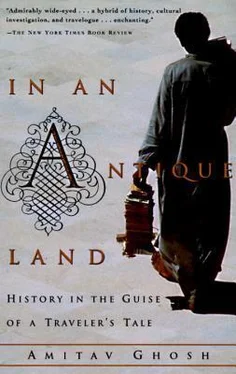
 u is spoken by 47 per cent of the population of South Kanara District — the area that was once known as Tu
u is spoken by 47 per cent of the population of South Kanara District — the area that was once known as Tu  ( Karnataka State Gazetteer [South Kanara District] , p. 94, Govt. of Karnataka, Bangalore, 1973).
( Karnataka State Gazetteer [South Kanara District] , p. 94, Govt. of Karnataka, Bangalore, 1973). auqâl, noted that Byzantine, Slavonic and Berber slaves were regularly traded in the cities of the east. (Cf. H. Z. Hirschberg, Jews in North Africa , p. 252). Edward H. Schafer deals briefly with the import of foreign slaves into China in The Golden Peaches of Samarkand , pp. 43–7 (University of California Press, Berkeley, 1963).
auqâl, noted that Byzantine, Slavonic and Berber slaves were regularly traded in the cities of the east. (Cf. H. Z. Hirschberg, Jews in North Africa , p. 252). Edward H. Schafer deals briefly with the import of foreign slaves into China in The Golden Peaches of Samarkand , pp. 43–7 (University of California Press, Berkeley, 1963). i Bamma:Ibid., pp. 72–73.
i Bamma:Ibid., pp. 72–73. e
e 